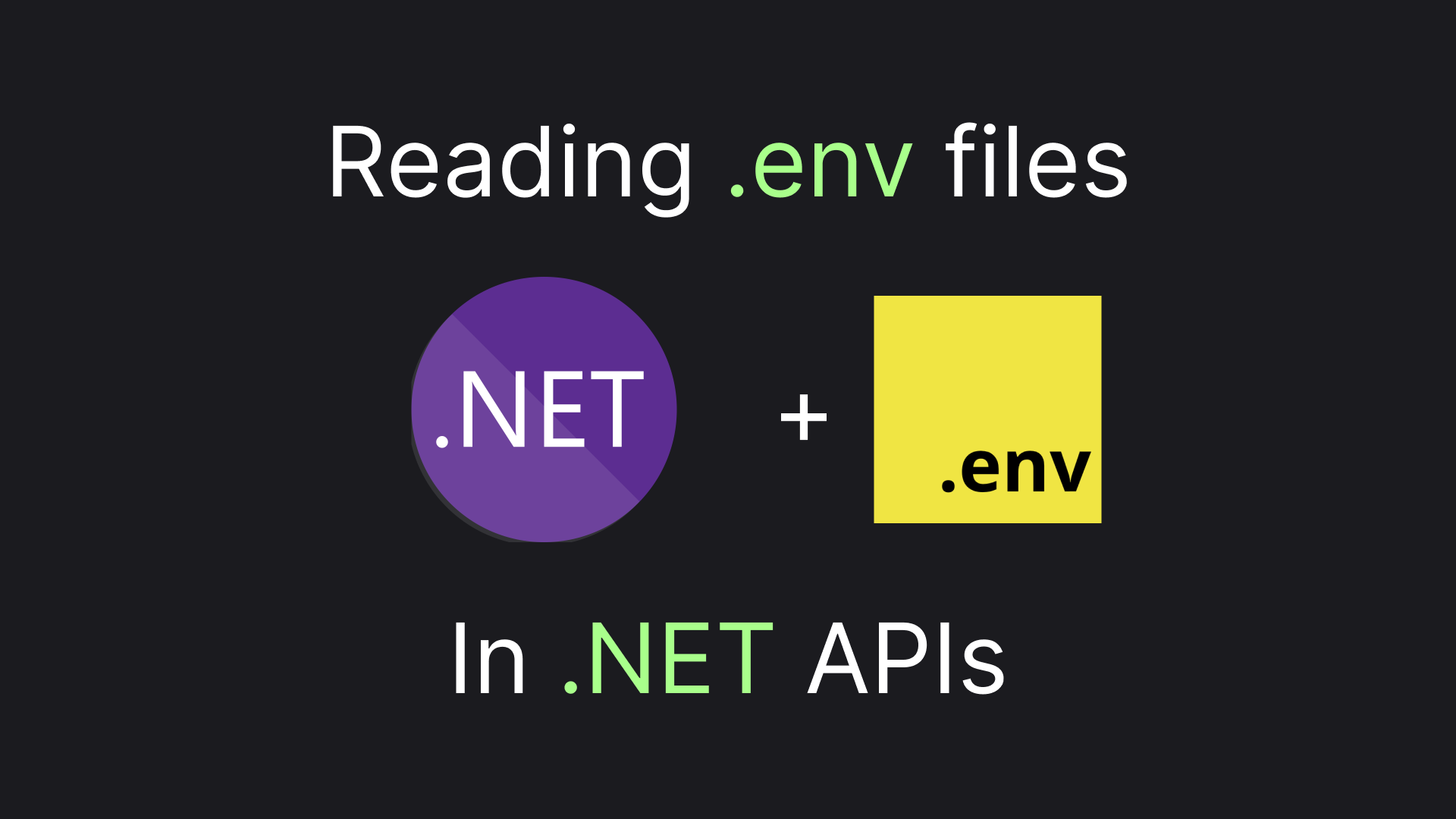.env in .NET
Connecting the Dots
Sometimes, a development team may want to have a configuration variable individual for every developer. There's no better tool to achieve that than .env files. However, .NET applications do not include this configuration source by default. Gladly, that's easy to fix. Let's do just that!

Preparing the Playground
You can jump straight to the TLDR in the end if you don't need a complete guide
We'll use a minimalistic web application template to get started. Here's the script that lets us start with the app:
dotnet new web --name DotEnvs.PlaygroundTo be able to check the configuration state we'll log our configuration value right before running the application. We'll also adjust our logging for using a single line, just to make the logs look less messy. Here's how our Program.cs should look after the adjustments:
var builder = WebApplication.CreateBuilder(args);
builder.Logging.AddSimpleConsole(c => c.SingleLine = true);
var app = builder.Build();
app.Logger.LogInformation("ConfigA: {ConfigA}", app.Configuration["ConfigA"]);
app.Run();And finally, let's place the .env file with our configuration in our project folder. Here's how the file content should look:
ConfigA=valueANow by starting our project using dotnet run we should see logs similar to the one below:
The article assumes all scripts are run from the project folder, so don't forget to
cd DotEnvs.Playgroundbefore running the scripts.

As we might expect, our .env file is not read yet, so we get a null for our configuration value. Let's get to the interesting part and fix it!
Loading the Variables
We'll use a nuget package called dotenv.net. You can install it like this:
dotnet add package dotenv.netNow, all we have to do is load variables from the .env files as environment variables before configuring our application. Here's the code:
using dotenv.net;
DotEnv.Load();
// Rest of the Program:
// var builder = WebApplication.CreateBuilder(args); ...Since the default web app configuration already loads environment variables as a configuration source the variables loaded from the env files will be loaded as well. So dotnet running our application will print our configuration value to the console:

So far so good! We were able to load configuration values from the .env files. But we have just one more thing to cover.
⚠️ Before the last thing, there's one more important thing. 🙂 The
.envfile typically contains something developer-specific. Moreover, it frequently contains something confidential, so it's almost always should be added to the.gitignore
Fixing Publishing
We were able to get our .env run with a dotnet run. But let's try to run this thing as we would do when publishing. Here's the script:
The script assumes the project uses .NET 9 and is named
DotEnvs.Playground
dotnet publish && cd bin/Release/net9.0/publish && dotnet DotEnvs.Playground.dll && cd ../../../..Here's the result we'll get:

We'll get null for our configuration value because our content folder changed and our .env file is just not there. To make the files included in the publish folder we have to add <Content Include=".env" CopyToPublishDirectory="Always"/> to an ItemGroup in our csproj. Here's how the file can look like after the addition:
It's typically advised to create another
ItemGroupfor nestingContent, but I find that quite redundant and prefer keeping my project file concise over making it. But feel free to pick your poison 🙂
<Project Sdk="Microsoft.NET.Sdk.Web">
<PropertyGroup>
<TargetFramework>net9.0</TargetFramework>
<Nullable>enable</Nullable>
<ImplicitUsings>enable</ImplicitUsings>
</PropertyGroup>
<ItemGroup>
<PackageReference Include="dotenv.net" Version="3.2.1" />
<Content Include=".env" CopyToPublishDirectory="Always"/>
</ItemGroup>
</Project>Unlike
CopyToOutputDirectoryCopyToPublishDirectorydoes not make the file required. Although the former is advised way more frequently I find the former way more useful - for example in the context of a docker build, which uses publishing under the hood.
With that setup if we simulate running a published app again
dotnet publish && cd bin/Release/net9.0/publish && dotnet DotEnvs.Playground.dll && cd ../../../..We'll get our variable back, with logs looking something like that:

This completes our small journey. Let's recap it with a little instruction in the TLDR; section.
TLDR;
.env files are one of the most fundamental sources of configuration. .NET doesn't include it by default, sill using the dotenv.net nuget package we can easily add the source to our app. Just make sure not to forget:
- Load environment variables from the file:
using dotenv.net;
DotEnv.Load();- Include the file in the publish directory. (in case it's not only used for local debugging)
<Content Include=".env" CopyToPublishDirectory="Always"/>- Add
.envto.gitignore.
Since the main use-case of this file is to be developer-specific.
- Clap for this article 👏
Well, that's not required... but would be appreciated 👉👈